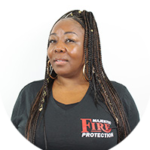Which Types of Fire Safety Equipment Companies Should Have on Premise?

OSHA is the regulatory body that ensures fire prevention at workplaces. To ensure workplace safety, OSHA has introduced safety standards for the workplace. Employers should implement fire safety measures for the employees and reduce fire hazards at the workplace. Every business or company with 10 or more employees needs to have a dedicated fire prevention plan and training to respond in emergencies. The National Fire Protection Association fire code makes it mandatory for all residential and commercial premises to maintain essential safety equipment like fire extinguishers and other fire protection equipment. There are different types of fire safety equipment available on the market that employees can use in an emergency if trained on using the safety equipment.
The following are the most functional and effective fire safety equipment that residential and commercial buildings must have to cope with unforeseen situations.
Fire Extinguishers
This is the primary safety equipment that every business should have at its premises. They should be easily accessible, ready to use, visible to employees, and inspected regularly. The fire extinguishers make fundamental fire safety tools capable of containing fire and saving lives from potential fire hazards. The equipment must be installed on walls at suitable places near the exits in the facilities. To operate the fire extinguishers, you need to follow the PASS method that involves pulling the pin, positioning the nozzle, pressing the lever, and moving the fire extinguisher from side to side.
Fire Suppression System
Fire Suppression Systems are used commonly for the safety of people and premises. They can prevent the potential damages of property and lives in the case of a fire eruption. NFPA 13 standards are followed for the design and installation of fire sprinkler systems. Fire extinguishers are only used to prevent small fires, whereas sprinklers provide an advanced protection system that prevents flames, smoke, and fire. The sprinkler system stops the fire from spreading and can completely secure the premises.
Smoke Alarms
Smoke alarms can reduce the risks of fire eruption by almost 90% and timely alert the users. It is the best tool to identify smoke and flames rising out of the fire on the premises. These alarms can detect fire, smoke, and flames within a building, and these devices turn on/off automatically whenever a smoke or fire erupts and goes off automatically. It is advised to test your smoke thirst month, and smoke alarm batteries should be replaced every year. Experts recommend changing smoke alarms after 10 years to ensure the safety of the building.
Carbon Monoxide Alarms
The presence of carbon monoxide in the atmosphere can be dangerous for people because it contains a poison, which can be inhaled with the breath. Carbon Monoxide alarms are tools that detect the carbon monoxide in the air and protect the workplace from potential poisonous gases that could have been inhaled along with other gases.



